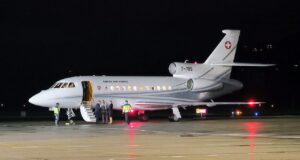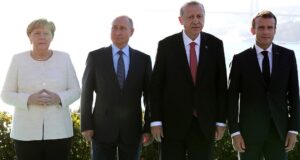Guest Contributor: Siiri Makela de Oliveira
5th September 2013
The nature of the crisis in Somalia is ever changing; Somalia experienced a civil war in the 1980s and state collapse, clan factionalism and warlordism in the 1990s. Over the last ten years the conflict has changed focus from clan rivalry to a conflict between Islamic insurgents and the Transitional Federal Government. Conflicts have also arisen between the two autonomous regions of Somaliland and Puntland over border issues. It has been a complicated and mutating crisis involving various external actors and therefore in order for any peacemaking attempt to be fruitful, unlike some of the interventions thus far, it is imperative to understand this complex history and the present state of affairs.
State collapse in the early 1990’s was a result of various internal and external factors. Internally, a civil war was instigated in 1988 by the attacks of the Somali National Movement which resulted in the death of tens of thousands and the displacement of over six-hundred-thousand Somalis. Moreover, the central government was fractioned and weak. Externally, the European colonial powers had left a state divided into five regions and wars with neighbouring countries left damaging effects on Somalia. Additionally, Somalia’s collapse was accelerated with the closing stages of the Cold War because as Somalia’s importance to the West lessened, so did the foreign aid which was sustaining the country. Due to the culmination of these multiple factors state collapse was imminent, however, it was the removal of Siad Barre, the long standing leader of Somalia, by the United Somali Congress (USC) in 1991, that ensued state collapse and its consequential anarchy and violence.
The early 1990’s were marked by clan-based warfare due to factions trying to gain control of towns and assets; filling the vacuum of power which yielded from the collapse of the central government. The warfare caused the displacement of over a million people and devastating disruptions to food supplies, which resulted in a fatal famine that caused around 250,000 deaths. The Somali crisis gained the attention of the international community in 1992, when the UN negotiated a ceasefire between Ali Mahdi Mohammed and Generall Mohammed Farah Aideed; the two main belligerents in Mogadishu. The UN operation (UNOSOM), which was supported by the US forces, was important in turning the attention of the world to the crisis and in saving lives by securing food supplies to those most vulnerable. It was also crucial for it facilitated some local agreements which improved security, led to the reopening of the airport of Mogadishu and pumped huge resources into the economy. However, the mission was unsuccessful in bringing peace to the country and in ending the famine. The mission has also been criticized for fuelling the war economy and for becoming embroiled in the conflict with General Aideed, which resulted in the notorious shooting down of the US black Hawk helicopter in Mogadishu and the eighteen deaths of US soldiers leading to the withdrawal of the US forces.
The departure of the UN mission to Somalia in 1995 resulted in the continuation of clan rivalry which had been partially frozen during their presence and people turned to traditional institutions to end violent confrontations and to establish a transitional step to developing trans-regional polities. The most successful of these traditional processes took place in secessionist Somaliland, however, in 1998 the Puntland Federal State of Somalia also became autonomous. In southern Somalia a variety of institutions took form such as Sharia courts and district councils which provided ‘governance without government’. The Somalis took full advantage of the lack of global deregulation of trade to establish successful businesses, especially in the field of telecommunications, and to conduct money transfers. The Somali participation in “Salafi commercial networks, and an increase in Islamic charitable funding, spurred the growth of Islamic organizations including welfare charities, Sharia courts and Islamist movements”.
The international community began to refocus on Somalia in the new millennium. The Djibouti government hosted a peace conference in 2000 which led to the Arta agreement that produced a transitional government. This government employed a consociate structure which included the four major clans proportionally into the government. However, soon after the conference the transitional government became associated with the powerful Mogadishu clans and the business class that was comprised of mostly Wahhabi Islamists, which led many to speculate about the governments links with the militant Islamists. Subsequently an opposing coalition called the Somali Restoration and Reconciliation Council (SRRC) was formed and led by Adbullahi Yusuf.
IGAD, who had earlier supported some of the peacemaking efforts in Somalia, decided in 2002 to reconcile the transitional government and the SRRC. The transitional government was succeeded by The Transitional Federal Government (TFG) in 2004, which saw Somalia’s power shift from Mogadishu, the Hawiye clan and Islamists to the federalist Darood coalition, backed by Ethiopia, with Abdullahi Yusuf chosen as the new transitional president. In the same way as the previous transitional government the TFG failed to be a government of national unity. Indeed, the power was concentrated in a narrow clan coalition and Yusuf’s decision to immediately request military backing from the African Union (AU) to help him establish his authority alienated the constituency in Mogadishu. On the other hand, had Yusuf not requested military force from the AU the TFG would not have survived the rise of the Islamic Courts Union (ICU).
The ICU gained public support due to its establishment of security in Mogadishu and it threatened the TFG by providing an alternative political system which was more apt at providing public services to the community than the TFG. As mediation efforts by the Arab League were unsuccessful the Ethiopian military, with Western backing, entered Somalia in 2006. They pushed the ICU out of Mogadishu and in its stead installed the TFG who had lost control of the capital. In 2007 AU peacekeepers were deployed to Mogadishu to shield the government’s institutions. The next few years were followed by resistance from the militant youth movement of the ICU who felt resentment because of the imposition of a victor’s peace; this insurgency contributed to further economic downturn and major internal displacement. Notably, this resulted in the radicalization of a new generation of Somalis.
In 2008, when UN mediated talks between the TFG and the Alliance for the Re-liberation of Somali (ARS), a timeline for Ethiopian withdrawal was agreed, Yusuf resigned and Sheikh Ahmed took his position as president. “The withdrawal of Ethiopian forces and the establishment of a new ‘unitary’ TFG created an opportunity to establish a moderate Islamist government in Somalia that had considerable backing from Somalis and the international community”. However, nine months later Somalia was in even greater turmoil than before because Al Shabaab, under the leadership of Ahmed Godane, denounced the agreement signed in Djibouti as betrayal by the ARS and declared its support for al Qaeda in 2010. The TFG, even with foreign backing from Kenya, has been incapable of combating Al Shabaab forces that control much of the South central Somalia. Ultimately, the military occupation, rising jihasism and violent insurgency has reversed the incremental political and economic progress which was achieved in 2008.
The crisis in Somalia has undergone a series of metamorphoses in the last three decades and although periods of progress have occurred it seems that Somalia is as far away from peace and development as they were after the collapse of the central government in the early 1990s.
Siiri Makela de Oliveira is a political adviser and writer focused on humanitarian aid, genocide, conflict and peace-building in Sub-Saharan and Eastern Africa.
Disclaimer: The views expressed in the article are the sole responsibility of the author and do not necessarily reflect the views of the Human Security Centre.
 Human Security Centre Human Rights and International Security Research
Human Security Centre Human Rights and International Security Research




